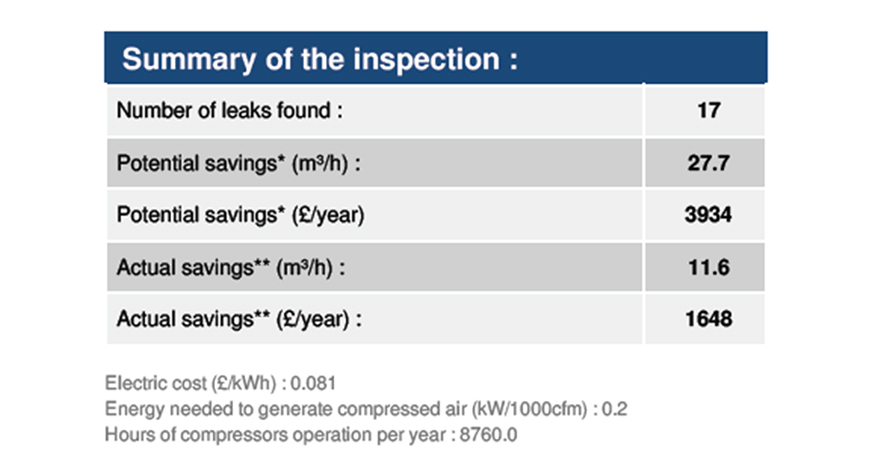We’ve all read about it: leak detection should be a top priority since leaks can account for up to 30 to 40% of consumed volume… So, why is this issue still on the table? Why is it difficult to change things in the field?
In industry, one of the most common applications for ultrasonic detectors is to search for leaks to achieve greater energy savings. For both service providers and maintenance engineers, the hardest task is not so much to localize the leaks, which is child’s play if you have the appropriate tool, but to generate a report of the problems found, organize the required repairs and communicate the resulting savings to management and others within the company. A company-wide cost reduction program will be efficient only if all stakeholders are involved. When the implementation of an efficient program aiming at minimizing the energy costs related to compressed air fails, it is not due to technology, which almost never fails, but to human factors. All surveyed companies that had initiated a leak detection program that did not last over the long term had something in common: a lack of communication.
The successful implementation of an energy-saving strategy relies on good communication between all stakeholders, directly or indirectly. What you need to do is involve five different persons or groups, each having a very specific role to play in this campaign. The first person is the Ultrasound Inspector: he/she knows the network and where to find the losses. The second person is the Purchasing Officer: he/she buys the equipment required to manage the program and possibly negotiates power supplies. The third person is the Maintenance Planner: he/she will schedule the repairs to be done after inspection of the network. The fourth group is the Maintenance Supervisor and Technician(s) who will repair the defects that have been localized. The fifth person involved is the most important one: he/she is the Executive Sponsor whose role is to motivate and drive the project and communicate the savings achieved to all concerned. By highlighting these savings within the company, he/she will make the project come alive with visible and measurable results.
It’s easy to say, but in reality takes a lot of time and organization. However, since the advent of smartphones, tablets and other connected devices in the maintenance world, you can now use free assistance tools available as iOS/Android applications to measure leak-induced costs and document them with pictures. These applications can also be used to assist the various stakeholders and monitor the different steps to complete the implemented program (e.g., LEAKReporter, LeakSurvey). These tools are now able to automatically assess the costs of the defects detected over an entire year. Communication between all departments affected, directly or indirectly, by the program is now simple and natural.
In 2018, we worked with a company located in the North of Manchester, England, which, for many years, has used measuring instruments to detect leaks. However, no energy savings have been observed nor measured. As a result, the team was experiencing a loss of motivation and had given up on its cost reduction strategy. Thus, our customer’s request was simple: give a new life to their projects. The first steps consisted in clearly redefining everyone’s role. The second step was to train the team in the use of newly available tools: leak detector and mobile applications. The third step was to set up a “think tank” inviting all stakeholders to reflect on the best approach to adopt to manage and organize a leak detection campaign before, during and after our intervention (see diagram below). Finally, the fourth step was to celebrate our results with all the persons involved in the project. After two days on site, everyone precisely knew what was expected of him/her. 17 leaks were localized, representing potential yearly savings of 3,934 GBP (4,481 EUR or $5,111 US) and, after the quick repair of 7 leaks; actual savings of 1,648 GBP (1,877 EUR or $2,142 US) were quantified. As a result, the inspector has a better control of his/her network and of compressed air losses and actual needs; the purchasing officer can calculate the return on investment; the technician feels valued by the savings generated from his/her work; and finally, everyone is thankful to the sponsor for (re)establishing communication between the different departments.

Automatic savings sheet and automatic work order were generated by the SDT LEAKREPORTER mobile application.

Loss (£/year) = $249 US
We also share with you our LEAK MANAGEMENT: FIND-AND-FIX LEAKS PROCEDURE: An effective way to survey your systems and detect leaks.
Thank you Benoît Degraeve with SDT Ultrasound Solutions for sharing this case study with us!
Filed under:
Articles and Case Studies, Ultrasound by Benoit Degraeve
